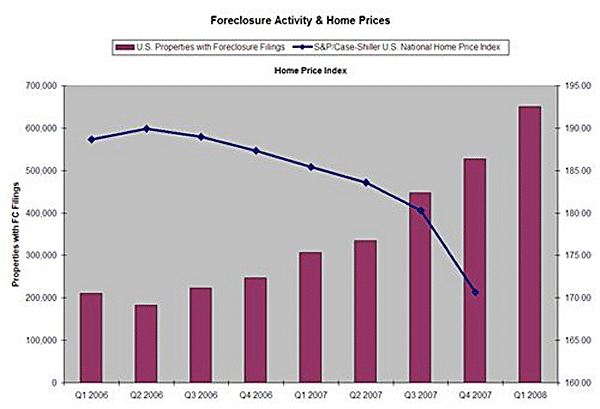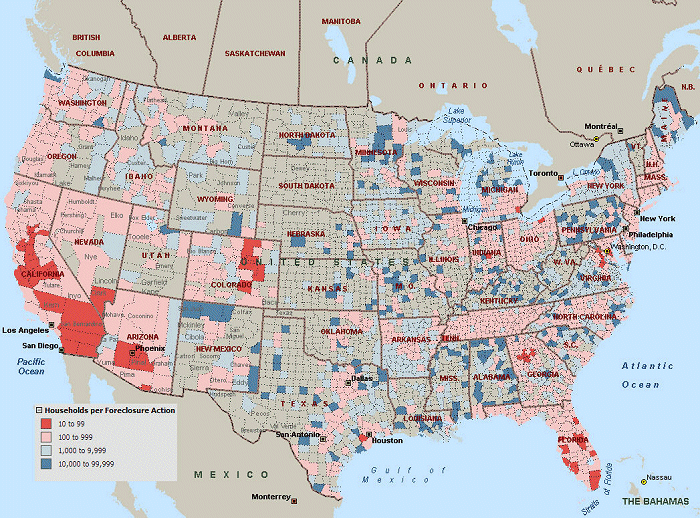|
TUESDAY EDITION December 16th, 2025 |
|
Home :: Archives :: Contact |
 |
Gold, Oil, Potash and Food: Top Investments This DecadeJames Westwww.MidasLetter.com May 1, 2008 Last week I wrote a piece forecasting $200 a barrel oil and $2,000 an ounce gold, and I gotta say, I've never seen that amount of mail generated by a single article in all my years as a writer. The top concern of the correspondents was, "How do I invest to protect against and capitalize on this eventual reality?" I haven't responded yet to all of the email, because it would take me a month to respond individually. So I thought this week I would flesh out the themes in that article a bit in the hopes of providing a path to prosperity over the coming decade. Of foremost importance is to embrace the idea that the investment climate of the next decade is nothing like the last decade. The landscape and very mechanics of market fluctuations have transformed, as the market itself has become instantaneously reflective of immediate influential factors, from a reactive environment to a predictive one. What I mean by that is, in the past, the fluctuations in the markets in general more in reaction to economic data and events, whereas now, with the near-instant transfer of information independent of geography or time zones, combined with the massive computing power of linked networks and light-speed chips, the market has become more predictive of data and events yet to transpire. This is why we are seeing days rife with bad news where the markets are exuberant versus days where the news is benign or even great, and the market plummets. The most capitalized investment institutions are using their formidable human and computing resources to position for what they believe the market will do tomorrow, 5 days from now, 30 days from now, etc. The arcane mathematical models developed, deployed, and then reconfigured again by thousands of Ph.D.'s in the course of a single session, and then revised overnight render us individual investors virtually powerless to accurately predict short term price movements. This is also why the junior markets are floundering right now. The volume of available equity units no longer qualifies for the massive position changes demanded by these quantified models, so they're left to function absent an ever growing number of institutions. The problem compounds itself as performance in the juniors stalls, invoking further abandonment by banking units who need volume and yield. It's the same thing that draws the largest investor classes ranked as 1) Traditional Funds, Banks and Insurance Companies 2) Sovereign Wealth Funds, and 3) Hedge Funds away from low volume junior markets and towards large volume (and therefore, larger yield potential) derivative transactions. With the re-bundling and risk insurance opportunities afforded as further derivative of derivative transactions, its no wonder the asset backed securities market turned into such a feeding frenzy before the inevitable melt-down. Currently, a second feeding frenzy is developing, as these opportunistic groups circle the growing pools of distressed assets now flooding the market, making ready to swoop in and scoop them up when the bottom is perceived. 
During the first quarter of 2008, 650,000 U.S. families saw the initiation of foreclosure proceedings on their homes. That's 1 in every 194 U.S. households! One in every 54 Nevada households received a foreclosure filing during the first quarter, the highest foreclosure rate among the states and 3.6 times the national average. Foreclosure filings were reported on 19,595 Nevada properties during the quarter, up 3 percent from the previous quarter and up 137 percent from the first quarter of 2007. Foreclosure filings were reported on 169,831 California properties during the first quarter, the highest total among the states and a rate of one in every 78 households - the nation's second highest foreclosure rate. Foreclosure activity in California increased 32 percent from the previous quarter and was up nearly 213 percent from the first quarter of 2007. 
Can you imagine the re-bundling and derivative parasites of Wall Street now slavering and foaming at the lips to whip up a new carnage for maximum gain?! So back to the main question - how do we invest - and thereby defend ourselves against these newly skewed and un-equitable markets? The only way is to invest for long-term value. Forget what's "hot". That's the language of Wall Street teeing you up for the sucker punch. You've probably found your way to this article because you already have developed a healthy mistrust of the Wall Street top tier publications, who obscure the parroted PR messages amid "journalism". And down here where the rhetoric goes a little more lights and the language tends toward plain, we embrace the lessons of history, with our gaze firmly set on present reality. And the reality is: gold is a reliable hedge against floating fiat currencies whose values are literally unquantifiable. Buy physical gold, or ETF's backed by physical gold, for the conservative portion of your portfolios. Owning the majors who demonstrate continues reserve growth each year is also a good bet for conservative positions. Finding a few well positioned and well managed gold juniors for the higher risk portion of your portfolio will be an astute investment in time. More and more, quality deposits will be picked up at earlier stages of development, providing shorter-term payouts for the right projects. Look for juniors with near surface, higher grade situations close to infrastructure in politically stable jurisdictions. Look for management teams with connections to larger companies, and track records of success. Watch our for companies financed too cheaply and/or frequently, with so much paper out, that even if they found Fort Knox the upside for investors would be severely encumbered by the company's own derivative slicing and dicing. When it comes to oil, Canada is where its at for the next decade. The costs of production of oil from the sands of northern Alberta and BC presently start at about $80 a barrel, and so with prices below that a relic of the past, and with more oil than Saudi Arabia and Russia combined, you'd be nuts not to have investments here. Same thing applies - producing majors for conservative positions, premium juniors for the risk tolerant ones. Increasingly, jurisdiction matters. Don't think that any foreign country is exempt from nationalist inclinations should it be deemed their discovered fields are in the "national interest". More Ecuadors and Mongolias are our there. Personally, I'd stay right out of China. Any nation who shoots its youthful citizens can't be trusted in business. There's a day of reckoning on that horizon yet. Now where we have new opportunity is in agriculture. Poor farmers are about to become the next minted middle class. Unfortunately, most of the Mom and Pops out there of any size are going to be consolidated into large Agri-Corps. The process has already started in Canada, where new Capital Pool Companies and other emerging juniors have already begun the process of consolidating farms under centralized management systems to maximize positioning on anticipated future high demand crops. Its not just rice and wheat that are seeing record highs. Its EVERYTHING! We could even see agricultural land start to compete with residential real estate in terms of value growth, considering Ag-land is going north while residential is still tanking. And so, in tandem with concerted farming activity, potash remains a tremendous opportunity, as its price will continue to climb. Already up 227% in a year, this is one commodity that threatens to outpace gold and oil in terms of near term performance. As with oil and gold, the major producers are conservative bets (well not so conservative with the largest producer, Potash Corporation of Saskatchewan predicted to increase in price by at least 50% according to bank analysts), while the handful of juniors who are able to lay claim to good potash ground will provide some heart-stopping gains for riskier investments. There are many other ways to invest in this quad of investment profit - but I don't have time to write a book on it...yet. James West jwest@midasletter.com www.midasletter.com May 1, 2008 |
| Home :: Archives :: Contact |
TUESDAY EDITION December 16th, 2025 © 2025 321energy.com |
|